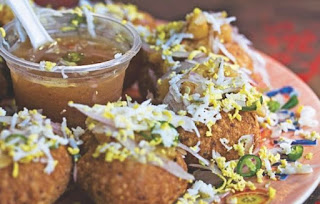A weight-loss therapy that concentrates on private values and "mindful" decision-making may possibly help people lose more pounds, a new medical demo advises.
Over one year, people who received the treatment lost more than 13 percent of their preliminary weight, on average.
To put that into viewpoint, current attitudinal therapies generally help people fall 5 percent to 8 percent of their beginning weight, the study authors said.
Researchers call the new strategy acceptance-based attitudinal therapy, or ABT.
The study authors said ABT addresses some of the most significant obstructions in keeping extra pounds off-including the difficulty of fighting off enticement.
"The standard advice on weight loss only works if people are able to stick with it," said Evan Forman, who helped develop ABT. He's a professor of psychology at Drexel University in Philadelphia.
There is nothing new about using attitudinal therapy to help people lose weight.
But, Forman said, the standard methods don't address the "main issue."
"People are biologically motivated to eat, especially foods that are rewarding and taste good," he said.
Through most of human history, when food was hard to find, that was an asset, Forman pointed out. Now, when so many people are ornamented by calorie-laden temptations every day, the neurological drive to eat can be a trouble.
"It takes special skills to avoid those lure," Forman said. "It's hard to turn down pleasure and reward. But those skills can be learned."
ABT aims to teach people those skills.
The new medical trial put the approach to the test by comparing it with common behavioral therapy, which only encourages reducing calories and increasing exercise.
Forman's team recruited 190 overweight or obese adults and randomly assigned them to either ABT or standard treatment. People in both groups went to 25 group classes over one year, getting together with therapists with expertise in weight loss.
Both groups received help with diet adjustments and exercise, "problem solving," and dealing with food cravings.
But ABT had added elements.
For one, Forman said, people chose a goal based on their "personal values"-rather than looking for a certain number on the bathing room scale.
A person might, for example, choose the goal of being a healthy, active grandmother.
"We highlight the point, 'Why does this matter?' " Forman said. "We get at the greater idea of what people want in life, and how is weight related to that?"
Beyond that, ABT stimulates people to accept the reality that weight loss is hard and they will undoubtedly feel starving, have yearnings, or find it uncomfortable to opt for an apple over a brownie.
"They can say, 'Of course, that's how my brain is working,' " Forman said. Then, rather than seeking to fix their thinking, they can focus on what they can change: their habits.
How do you learn to choose the apple when your brain really wants the brownie? Tolerance and practice, according to Forman.
"It sounds weird, but you can literally exercise tossing a piece of brownie in the waste and eating the apple instead," he said.
Another factor of the therapy is training in "mindful" decision-making.
"So many of the decisions we make around eating have no specific idea process behind them," Forman said.
During ABT, people learn to notice how "cues" from their environment-from TV to the presence of tempting food to sheer boredom-influence their decisions to eat.
In this new trial, the approach appeared to work better than common therapy: After a year, ABT patients had lost a little over 13 percent of their beginning weight, opposed to just under 10 percent for people in the assessment group.
The ABT group also fared better when it came to maintaining the pounds off: 64 percent had maintained at least a 10 percent weight loss at the one-year mark, likened with 49 percent of the standard-therapy team.
Dr. Steven Heymsfield is a speaker for the Obesity Society and a mentor at Pennington Biomedical Research Center, in Baton Rouge, La.
He had compliment for the ABT approach.
"It identifies the root biological drive to eat, and provides people with a powerful counterweight to that," said Heymsfield, who wasn't involved in the research.
Losing weight is not just about "self-discipline," Heymsfield said. People have to defeat strong biological impulses -- and that takes strong inspiration, he said.
It makes sense that concentrating on important individual values (such as being a healthy grandma) can work better than a "superficial goal" of fitted into smaller jeans, Heymsfield said.
Still, he indicated to some big remaining questions about ABT: Does the weight loss hold up over time? And does the therapy have to be continuing?
Practically speaking, it's not clear no matter if ABT can be displayed widely.
In this research, it was given by Ph.D.-level professionals, Heymsfield pointed out.
"So can this program 'transport' well?" he asked. "Can it be incorporated into a Watch Watchers or Jenny Craig program?"
Forman agreed that practical obstacles have to be addressed. He also said it's possible that after the initial therapy sessions, people could have once-a-year "enhancer" sessions-or even get help through mobile apps-to make the approach more achievable.
The study is released in the October issue of the journal Obesity.































